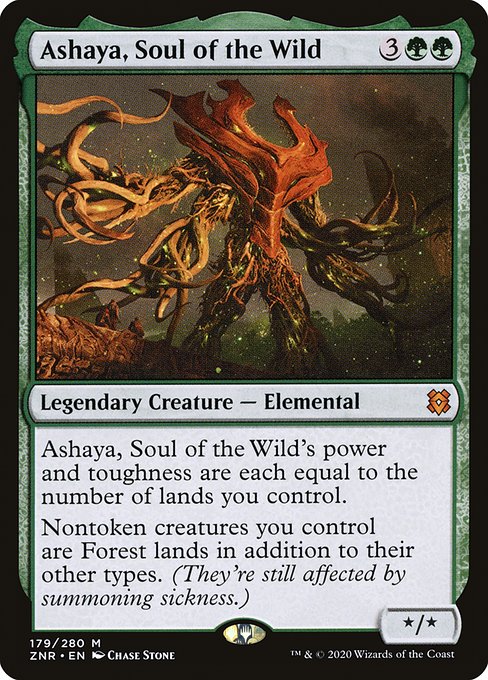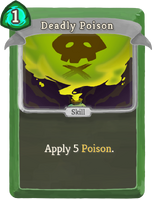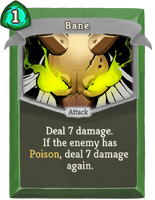My synergy framework
- Pietro D'Ammora
- 28 mag 2024
- Tempo di lettura: 5 min
This week I will delve into a somewhat difficult but very fascinating topic: synergy. I will explain a framework I use to create synergy among game elements giving examples from other games, then we’ll try to create abilities for a simple game created for this article.
Synergy happens within systems
First of all, we have to establish what synergy is. The dictionary defines it as:
“The interaction of elements that when combined produce a total effect that is greater than the sum of the individual elements.”
So synergy happens when things connect to produce something more powerful than those elements would produce individually. Let’s restrict the field a little bit. Usually synergy is found in a game among different interacting components of a game system that enhance the players in some ways. I will, for simplicity's sake, call these kinds of system ability systems. I don’t think it’s necessary to precisely define what an ability system is, but obviously it has to be made by single elements (the abilities) that share a common structure and interact with one another to make the player stronger. The definition is broad and obviously can include the abilities of many different genres, from the cards effect in a card game to the different powers a player can pick up in a roguelike. I will also note that a game often includes more than one ability system, and further synergy may occur among elements of different systems.
The bricks of synergy
Before exploring how to build synergy among abilities, let’s broadly characterize abilities as a whole. In general, every ability in a system can be written using four simple elements as a basis:
trigger, what activates the ability
output, the resulting effect of the ability
input, value of a variable in your game that is used by the ability to calculate the output
condition, a check on the game state that can alter the output of the ability

Consider this card with 2 abilities:
Its power (output) is equal to the number of creatures in your party (input)
At the beginning of combat (trigger), if you have a full party (condition), target creature gets +1/+1 and gains flying (output)
As you can see, not every ability needs all 4 elements.
It’s important to specify that there are different kinds of triggers, mainly what I would call exclusive or independent triggers. Exclusive triggers have a cost and happen as a result of a player's decision, while independent triggers happen anyway. Why is this important? Let’s take Hades as an example.

Hades is a real time game, so in a given time interval players can only make one of the moves at their disposal. Making one single move stronger by piling up boons that use that move as a trigger obviously makes players more powerful, as they gain more with the same cost (that in this case is a cost in time and opportunity).
The same isn’t necessarily true (but obviously can be) for triggers that don’t have a real cost for the players. For example cards in Magic that all trigger at the end of your turn don’t really synergize with one another.
The synergy matrix
I will now create a synergy matrix, to show how to quickly create abilities that synergize with one another. Imagine I have two abilities, A and B, each broken down into its 4 elements. Now for each element of A, check if it is in any of these relationships with the elements of B. If the answer is yes the abilities are synergistic.
Input B | Output B | Condition B | Trigger B | |
Input A | Realizing | |||
Output A | Feeding | Realizing | Increasing | |
Condition A | ||||
Trigger A | Same (exclusive) |
Explaining more in detail:
Output feeding input
The simplest synergy possible, when the output of an ability is used as the output of the other.
Note that the output of A can also be a negative effect or downside that can be partially mitigated by ability B, to create an even stronger dependency.
Output realizing conditions
The output of the first ability helps realize the condition of the second one.
Input realizing conditions
Inputs can sometimes alter the game state when they are consumed as a resource. This in turn can activate conditions.
Output increasing triggers
When the first ability increases the number of triggers of the second one.
Same exclusive trigger
Two abilities that happen at the same time. They are actually synergistic only if the trigger is exclusive, i.e. the player is paying a cost, even only in terms of other actions they’re renouncing.
In this case players have to actually play a pair to get the bonus, renouncing to other poker cards.
Matrix as a tool
I will now show how this framework can be used to create other synergistic abilities in a system. Let’s pretend we are in turn based RPG, where the character can attack or cast spells and gains special abilites from magic items. We have the following starting item:
Sword of Wrath: When you attack you can spend up X mana to deal that much damage.
Let’s break it down:
Trigger = when you attack
Input = mana
Output = damage
Now, using this as ability A, we can use our matrix to create new magic items or spells that are synergistic with the first.
Output feeding input
Vampiric Touch: In your tunr, for each damage you deal, gain that much life
Output realizing condition
Helmet of Wrath: If you deal at least 10 damage to an enemy with a single ability, destroy it
Input realizing condition
Old Vest: At the start of your turn, if you have less than 30 mana, gain 10 mana
Output increasing triggers
Time Twisting: You have an extra attack each turn
Same exclusive trigger
Poisonous oil: When you attack, poison the enemy
We can obviously also consider this item as card B, creating, for example, items that increase your mana to feed its input.
In conclusion
Before leaving, I wanted to add that there are also be many synergies that depend on the rules of your game, which secretly hide upsides or downsides for certain strategies, and that can be altered to strengthen certain abilities. For example magic has 7 cards in hand limit, which is anti-synergistic with drawing many cards. So a card that removes that limit, although not included in my framework, will be synergic with any card drawing ability. In the end, as with any game design framework, this is just a suggestion that aims to be generally useful but that has to be tweaked depending on the game you’re working on.
That’s all for today, I was very excited to deal with such a fascinating topic, hope you liked it as well. See you next week when we’ll all suck a little less.
















Comments